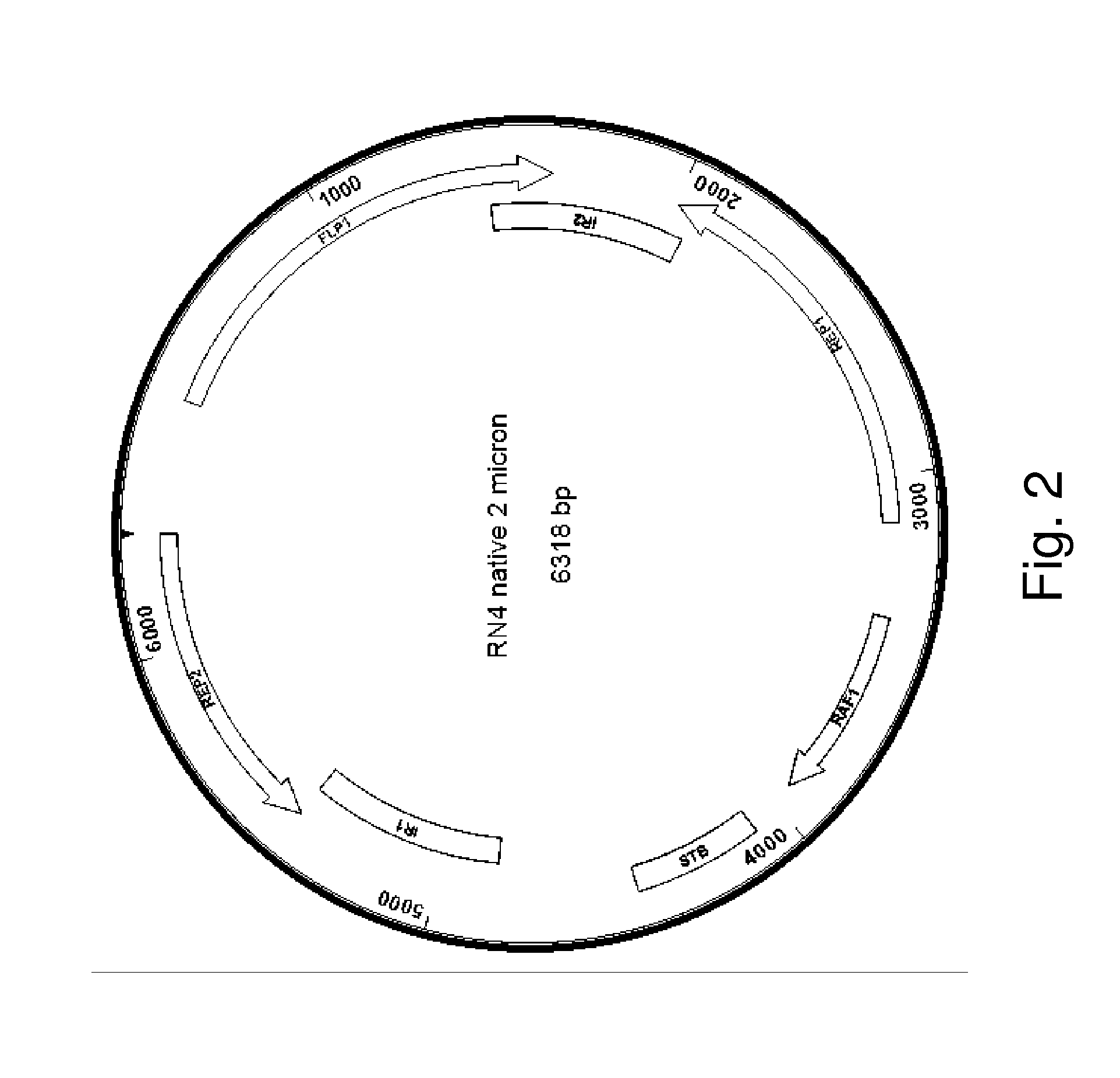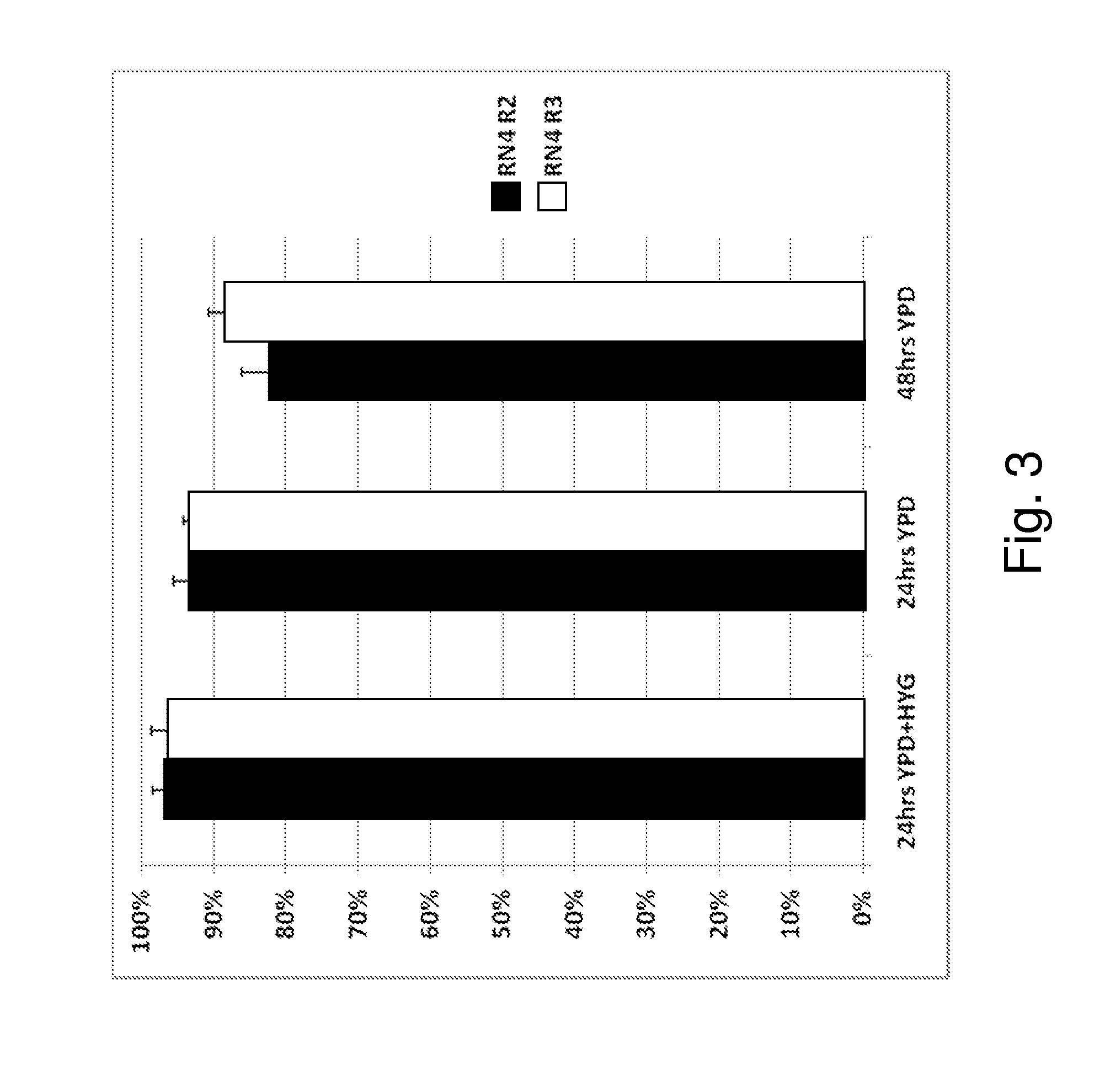Use of an Endogenous 2-Micron Yeast Plasmid for Gene Over Expression
a technology of endogenous 2-micron yeast and plasmid, which is applied in the field of yeast cloning and expression, can solve the problems of complex structure, high-throughput cloning and expression of molecular variants, and many proteins and other expression products are not correctly processed
- Summary
- Abstract
- Description
- Claims
- Application Information
AI Technical Summary
Benefits of technology
Problems solved by technology
Method used
Image
Examples
examples
[0092]The following examples are offered to illustrate, but not to limit the claimed invention. One of skill will recognize a variety of non-critical parameters that can be changed while achieving essentially similar results.
[0093]A common problem in industrial settings is plasmid stability and retention in yeast under propagation and / or production conditions. For example, the stability of a high copy number plasmid that is currently used as a vector to overexpress genes in yeast, even in the presence of antibiotics as selective agents, was found to be less than 40%.
[0094]As described herein, the presence of an endogenous or native plasmid in a yeast strain was discovered. Sequencing of the plasmid showed more than 99% similarity to other 2 μm plasmids reported in the literature. The fact that this plasmid was identified, despite the extensive manipulations done to this strain, suggest that this native plasmid is very stable. To explore the possibility of using this plasmid as a clo...
PUM
| Property | Measurement | Unit |
|---|---|---|
| Length | aaaaa | aaaaa |
| Fraction | aaaaa | aaaaa |
| Concentration | aaaaa | aaaaa |
Abstract
Description
Claims
Application Information
 Login to View More
Login to View More - R&D
- Intellectual Property
- Life Sciences
- Materials
- Tech Scout
- Unparalleled Data Quality
- Higher Quality Content
- 60% Fewer Hallucinations
Browse by: Latest US Patents, China's latest patents, Technical Efficacy Thesaurus, Application Domain, Technology Topic, Popular Technical Reports.
© 2025 PatSnap. All rights reserved.Legal|Privacy policy|Modern Slavery Act Transparency Statement|Sitemap|About US| Contact US: help@patsnap.com



